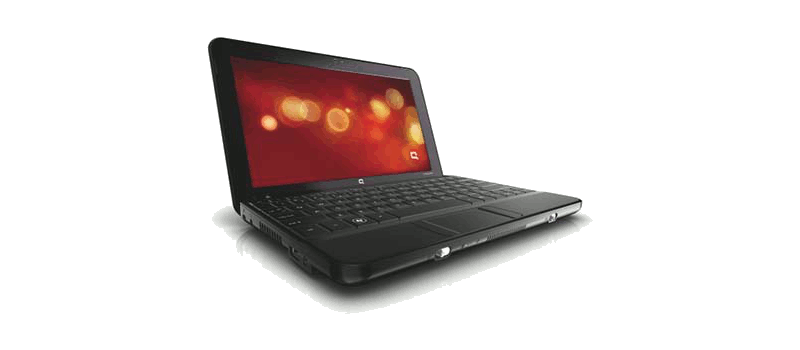Hardware description
| Processor | Intel Atom N270, 1.6 GHz |
| RAM | DDR2, 1 Gb |
| Hard Disk Drive | Samsung SATA 160 Gb |
| Screen | WXGA, 10.1″, SD LED, max resolution 1024×600 |
| Video Card | Intel Mobile 945 GME, VGA output |
| USB | 3 hi-speed USB2 ports |
| Network | Ethernet 1Gbit/s, Atheros AR8132 |
| WLAN | 802.11 B/G with manual kill switch, Broadcom BCM4312 |
| Memory Cards | Memory Stick / Memory Stick Pro / SD / MMC / XD |
| Audio | Intel ICH7 High Definition Audio Controller |
| TV-out | no |
| Bluetooth | no |
| Ir-DA | no |
| Accessories | Webcam |
| Dimensions | 26.15 x 2.63 x 17.2 cm |
| Weight | 1.2 kg |
| Battery | Lithium-Ion, approximative autonomy 4h |
General state
Revision of this document: March, 2010.
Here is a short table summarizing what I could have made with the hardware.
| Hardware components | Status |
|---|---|
| Integrated network card | fully functional |
| Wifi network card | fully functional |
| Display | fully functional |
| USB | fully functional |
| Sound | fully functional |
| Mobile CPU | fully functional |
| Memory Cards reader | fully functional |
Kernel
All description below are based on a vanilla kernel version 2.6.32.
Boot time
The kernel needs to be appended with the parameter fake_ecdt in the configuration file of Lilo or Grub. Otherwise, the computer may hang during its startup period.
Network
Integrated network card
The network card is an Attansic Atheros AR8132 L1C. The kernel driver is atl1c (experimental). It works fine.
Wifi network card
The Wifi card is a Broadcom BCM4312. No vanilla kernel driver can run this hardware. So you will have to get the appropriate source code. Debian provide them with two packages you will have to get: broadcom-sta-common and broadcom-sta-source.
Now you have to compile and install them : tar xfj broadcom-sta-source.tar.bz2, then make && make install && depmod -a.
Now it’s OK, as you can see after loading the kernel module and starting the network interface : modprobe wl and ifconfig eth2 up.
You can see it’s working with two possible commands:
anteia:~# iwconfig eth2
eth2 IEEE 802.11bg ESSID:""
Mode:Managed Frequency:2.412 GHz Access Point: Not-Associated
Bit Rate:54 Mb/s Tx-Power:24 dBm
Retry min limit:7 RTS thr:off Fragment thr:off
Encryption key:off
Power Managementmode:All packets received
Link Quality=5/5 Signal level=0 dBm Noise level=0 dBm
Rx invalid nwid:0 Rx invalid crypt:0 Rx invalid frag:0
Tx excessive retries:0 Invalid misc:0 Missed beacon:0
anteia:~# iwlist eth2 scan
eth2 Scan completed :
[...]
Cell 03 - Address: CA:9C:2E:EF:B7:56
ESSID:"FreeWifi"
Mode:Managed
Frequency:2.422 GHz (Channel 3)
Quality:1/5 Signal level:-88 dBm Noise level:-91 dBm
Encryption key:off
Bit Rates:1 Mb/s; 2 Mb/s; 5.5 Mb/s; 11 Mb/s; 9 Mb/s
18 Mb/s; 36 Mb/s; 54 Mb/s; 6 Mb/s; 12 Mb/s
24 Mb/s; 48 Mb/s
[...]
You must not load the kernel modules b43 or rfkill!
Display
Display at boottime
Instead of the classical 80×24 console during boot time, you can get a nice framebuffer console. You’ll have to compile into the kernel the VESA framebuffer driver (CONFIG_FB_VESA). The specific Intel framebuffer driver does not work as expected, you should prefer the generic VESA one.
Don’t forget to reconfigure your OS loader. With lilo you will have to specify the parameter vga=0x315 in the configuration file so as to get a console in 800x600x16M.
You may like to get a nice image displayed buring boot time, instead of the kernel messages. You can install the software splashy to do that. I did not manage to make it work without an initrd, because too many libraries and woftwares are needed by splashy. So you need to run update-initramfs and add a line initrd=/boot/your-initrd.img in lilo.conf. Do not forget to also add the support for initrd in your kernel!
Graphical display
Nothing special has to be done there, everything with Xorg works out the box with the Intel 945 GME display card.
USB
Nothing tricky with the USB configuration. You just have to activate the kernel support of UHCI and EHCI and it will be OK.
Sound
The network card is an Intel ICH7 one. The kernel driver hda-intel works fine.
CPU
To get a CPU with frequancy scaling, you will have to compile the kernel driver acpi_cpufreq. You will get a CPU which can downsize its core frequency to the half:
anteia:~# cat /proc/cpuinfo processor : 0 vendor_id : GenuineIntel cpu family : 6 model : 28 model name : Intel(R) Atom(TM) CPU N270 @ 1.60GHz stepping : 2 cpu MHz : 800.000 cache size : 512 KB physical id : 0 siblings : 2 core id : 0 cpu cores : 1 apicid : 0 initial apicid : 0 fdiv_bug : no hlt_bug : no f00f_bug : no coma_bug : no fpu : yes fpu_exception : yes cpuid level : 10 wp : yes flags : fpu vme de pse tsc msr pae mce cx8 apic sep mtrr pge mca cmov pat clflush dts acpi mmx fxsr sse sse2 ss ht tm pbe nx constant_tsc arch_perfmon pebs bts aperfmperf pni dtes64 monitor ds_cpl est tm2 ssse3 xtpr pdcm movbe lahf_lm bogomips : 3193.05 clflush size : 64 cache_alignment : 64 address sizes : 32 bits physical, 32 bits virtual power management: [...]
If you want to monitor the temperature, you will also have to compile the module cpucore and lm-sensors will be able to display it:
anteia:~# sensors coretemp-isa-0000 Adapter: ISA adapter Core 0: +31.0°C (crit = +90.0°C) coretemp-isa-0001 Adapter: ISA adapter Core 1: +31.0°C (crit = +90.0°C)
Memory card reader
The memory card reader is an USB2 one, manufactured by Realtek. It works out of the box: just plug and read!
Webcam
The webcam is an HP Webcam-50. The chip is a Syntek one. The kernel module to use is uvcvideo. When loaded, tests can be done with luvcview -f yuv or mplayer -vf screenshot -fps 30 tv://.
Appendix
These are some files you could find interesting, configuration files and log files:
- dmesg (kernel 2.6.32)
- lspci, lspci -n and lspci -v
- /etc/X11/xorg.conf
- /etc/lilo.conf
- /proc/config.gz (kernel 2.6.32)
- lsmod (kernel 2.6.32)

